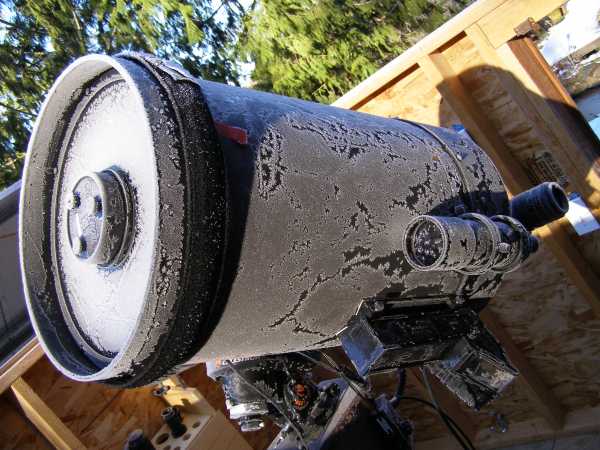The Arkansas Sky Observatory is one of the most referenced sites when it comes to optics cleaning.
I have a few nitpicks about the advice though. I don’t think that brushing the dust first with a hardware store paintbrush is a good idea, no matter how “soft” it is. If you feel you must brush it, a camel’s hair brush intended for camera cleaning would be a better choice.
Instead of first wiping the surface of a corrector plate with a moist cotton pad, I’d mist it with cleaning solution to wash any loose dust particles from the plate.
In the Celestron Knowledge Base , they recommend using canned or filtered compressed air to remove any dust.
Me? I prefer the “frost” method. If you live in an area with cold winter weather, wait until the temperature drops into the 20′s and leave your scope out all night. Moisture will form on the corrector plate and then freeze. The expansion of the forming frost will gently lift the dust particles off the plate. When the sun comes up, point the tube downward so the melting ice washes the dust away and doesn’t enter the plate frame.
Of course I’m not serious but it sounded good didn’t it? ![]() I left the roof open thinking I would get out of bed to view Saturn in the early morning hours. Forgot to set the alarm…
I left the roof open thinking I would get out of bed to view Saturn in the early morning hours. Forgot to set the alarm…
-
That's the first proof of water on Saturn I've seen.
-
"Arkansas Sky Observatory" and "Celestron Knowledge Base" are links n/t
-
Well yeah, they're underlined. ;-) n/t
-
Indeed n/t
-
Indeed n/t
-
Well yeah, they're underlined. ;-) n/t
- Cool 'Scope.
